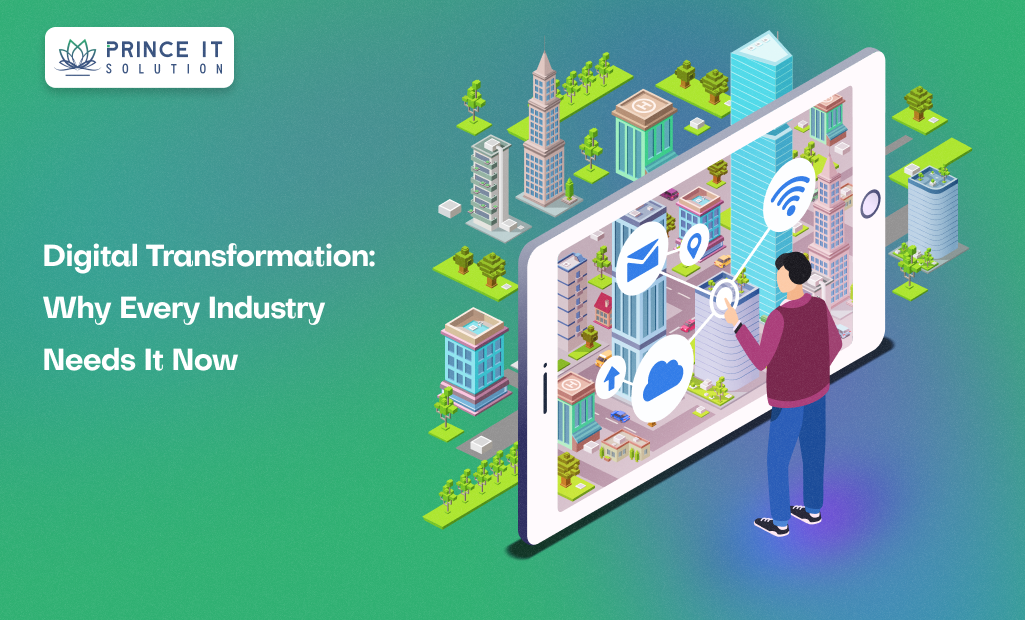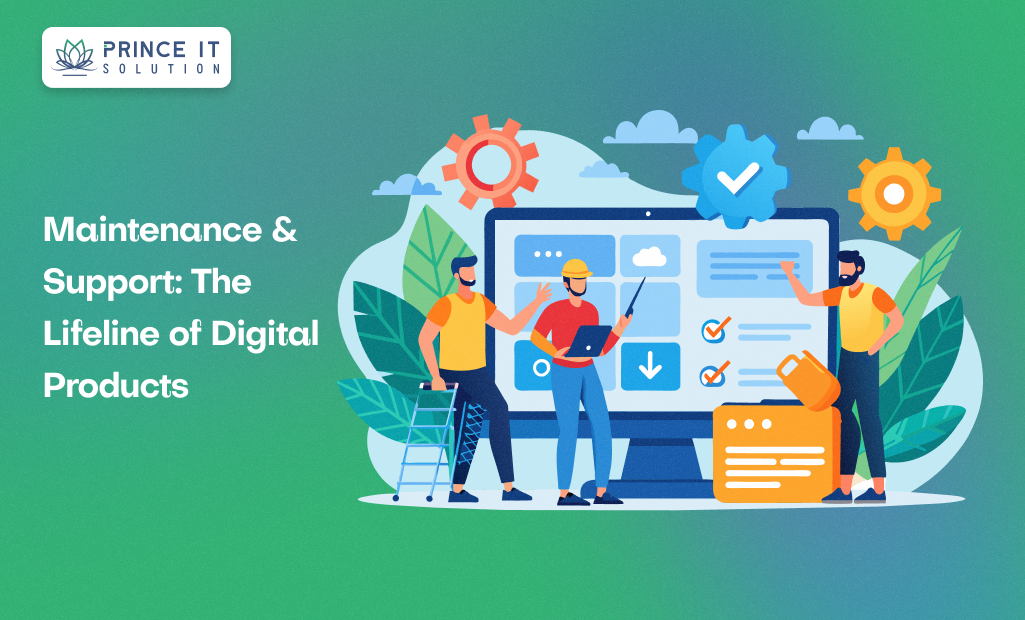Introduction:
The Digital Shift That’s Reshaping the World
We live in a time where technology isn’t just supporting businesses, it’s redefining them. From how we communicate, shop, and learn, to how industries produce, deliver, and grow, digital transformation has become the heartbeat of progress.
Digital transformation isn’t just about moving from paperwork to software or building a fancy website. It’s about fundamentally rethinking how organizations create value, compete, and engage with customers.
Industries across the globe, healthcare, retail, finance, education, manufacturing, logistics, hospitality, and more, are embracing digital transformation not because it’s optional, but because it’s essential for survival and growth.
Companies that fail to adapt risk becoming obsolete, while those that embrace digital innovation unlock opportunities for efficiency, customer satisfaction, and long-term success.
In this blog, we’ll explore why digital transformation is necessary for every industry, what it means, its key components, challenges, and what the future holds.
What is Digital Transformation?
At its core, digital transformation is the integration of digital technologies into all areas of a business, changing how you operate, deliver value, and respond to market demands.
It’s not just about adopting new tools, but about reshaping culture, processes, and business models.
Digital transformation often involves:
Automating manual processes
Leveraging cloud computing
Using data analytics for smarter decisions
Embracing artificial intelligence and machine learning
Redefining customer experiences with personalization
Enhancing mobility through apps and platforms
Strengthening security with modern solutions
It’s a continuous journey, not a one-time project.
Why Digital Transformation Matters for Every Industry
Industries differ in products, services, and customer base, but they share one undeniable truth: technology has changed the way people expect to interact with businesses.
Here’s why it matters:
1. Changing Customer Expectations
Today’s customers demand speed, convenience, and personalization.
Digital platforms like Amazon, Netflix, and Uber have raised the bar.
Whether you’re in retail, healthcare, or finance, customers expect the same seamless experiences.
2. Global Competition
Borders are no longer barriers.
A small business in India can compete with a global brand in the US if it uses digital channels effectively.
Without digital tools, industries risk falling behind competitors who innovate faster.
3. Data-Driven Decision Making
Businesses generate massive data from websites, apps, social media, and transactions.
Digital transformation turns this raw data into insights that help companies predict trends, understand behavior, and improve performance.
4. Operational Efficiency
Manual processes = slow, error-prone, and costly.
Automation, AI, and cloud solutions reduce costs and increase speed.
Example: Manufacturing industries using IoT sensors for predictive maintenance.
5. Crisis Readiness
The COVID-19 pandemic proved that only digitally agile companies could adapt quickly.
Remote work, online learning, telemedicine, and e-commerce skyrocketed.
Digital tools became the backbone of continuity.
Key Pillars of Digital Transformation
To understand why industries need digitalization, let’s break it down into its major pillars.
1. Customer Experience
Delivering personalized, seamless, and consistent experiences across channels.
Example: Retailers using AI to recommend products based on browsing history.
2. Operational Agility
Making businesses more flexible and adaptive to market changes.
Example: Supply chain companies using predictive analytics to avoid disruptions.
3. Culture & Leadership
Digital transformation requires a mindset shift.
Leaders must encourage innovation, collaboration, and experimentation.
4. Workforce Enablement
Employees need digital tools to be more productive.
Example: Cloud collaboration tools like Microsoft Teams, Zoom, or Slack.
5. Technology Integration
Adopting modern solutions like:
Cloud Computing (scalability, cost-efficiency)
Artificial Intelligence (AI) (automation, personalization)
Internet of Things (IoT) (real-time monitoring)
Big Data & Analytics (smarter decisions)
Cybersecurity (protecting assets)
Conclusion
Digital transformation is no longer optional; it’s a survival. Businesses that embrace it unlock efficiency, innovation, and customer loyalty. Those who delay risk obsolescence.



